Canoeists love to debate camping techniques. Single blade or double. Stuffing your tent or rolling it. Ground cloth inside or outside. One of the longest-running, raging disputes among wilderness paddlers is how to properly store your food to keep it away from bears.
The bear canoe: Debunking the second worst way to store your food overnight
According to many experts, the best way to store your food in many areas is to hang it. You know the drill. String it up between two trees or over an outstretched limb, a minimum of 10 feet from branches and trunks and more than 10 feet off the ground. However, large groups face another challenge. What if you’ve brought so much food your storage barrel or bag weighs too much to haul up? Or, what if you have multiple bags or barrels?
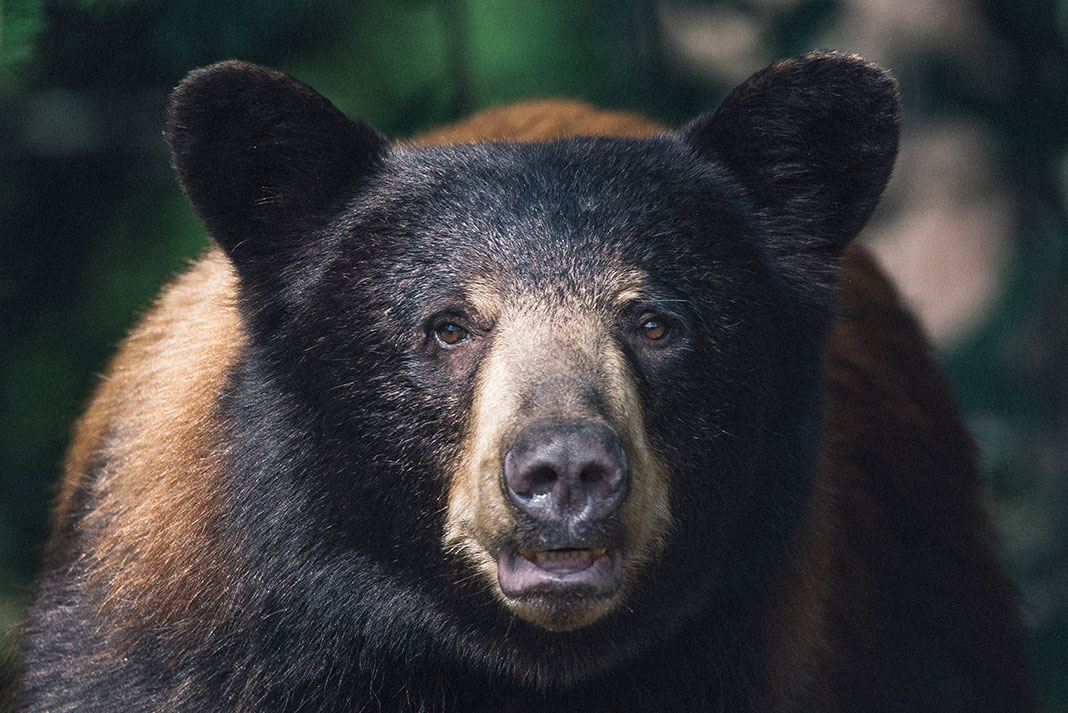
Dear reader, you may have many solutions to this conundrum, but please pipe down. Instead, let me tell you about the bear canoe method.
Also called the floating technique, this alternative has been used by many youth camps I worked at throughout the years. The system is simple, though not idiotproof.
How to try the bear canoe technique—if you dare
First, place your food in waterproof storage sacks or barrels and clip the barrels or packs into a canoe. Then tie a 30- to 40-foot rope on one grab handle of the canoe and tie the other end to a tree on the shore. Next, tie a second, shorter rope to the same grab handle of the canoe and then tie a rock to its other end. This is your anchor.
Now, using your second canoe, paddle the canoe with all your sustenance out into the lake, about to the end of the rope attached to the tree. Finally, drop the anchor and paddle back to camp.
Now go to bed. Sweet dreams.
If you’re on a trip with only one canoe, here’s a trick so you too can participate in this risky overnight food storage method. First, place the tied-up anchor rock on the gunwale, and wrap it with a couple of loops of the main rope that has been tied off to shore. Then, when you push the canoe out into the lake and the main line becomes taunt, the rock will roll into the water and become an anchor for the canoe.
Now, forget that you’ve just sent your only means of transportation out to sea and sleep soundly.
Pitfalls of floating food storage
I never slept well listening to a light chop slap the hull of my canoe all night, anxiously wondering if both my bacon and boat would be gone by morning. In fact, I’m skeptical of this storage technique altogether. Bears can swim, right? If a bear can locate food on the ground, why wouldn’t she find it in a tethered canoe?
There’s a theory bears can’t tread water very well, so it would be hard for a bear to propel itself into the canoe. It’s not a theory I want to test, and capsizing the canoe also seems like a poor outcome in my book.
Most concerning, if a storm comes up in the night, the wind and waves could release the canoe’s anchor, sending the canoe and food off on a joy ride across the lake. A less unfortunate but still far from ideal outcome is if the canoe washes up on shore like a great big picnic basket for nocturnal critters.
On most wilderness canoe trips, the canoe is your most essential tool. You can likely survive without food, tent and supplies for a few days. You can drink the water from the lake. But your canoe is your ticket home. Don’t leave it floating.
Kevin Callan is the author of 19 books, including his new memoir, Another Bend In The River.
Skeptical about your storage methods and plotting to raid your supplies later for the baby cheeses. | Feature photo: Alan Poelman


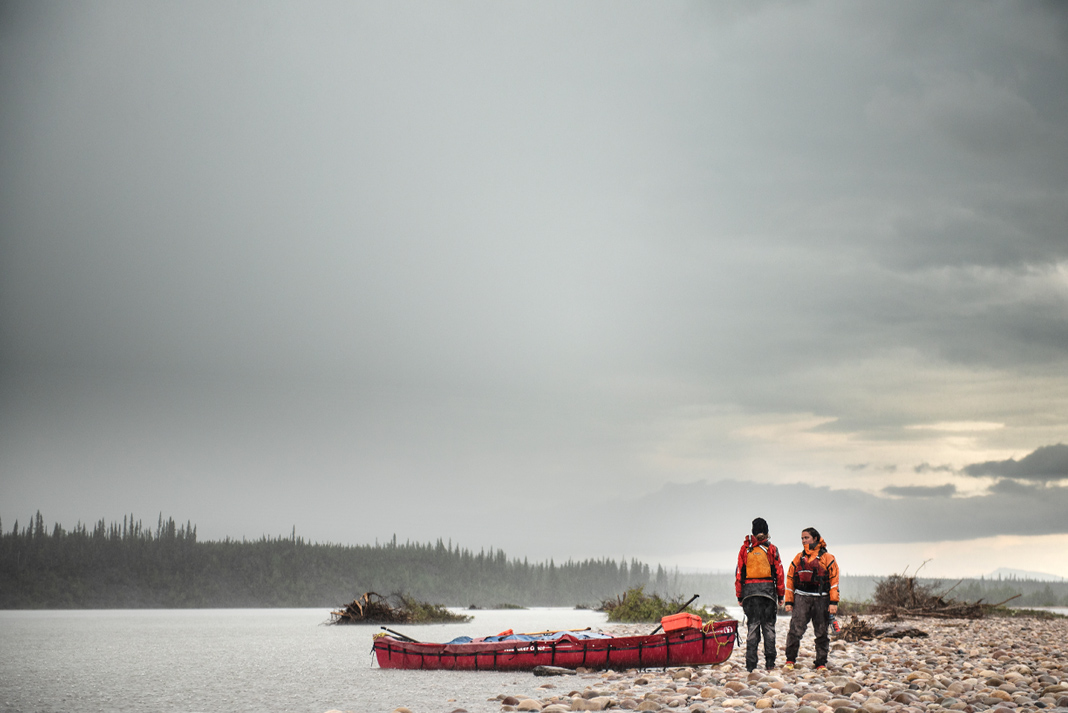

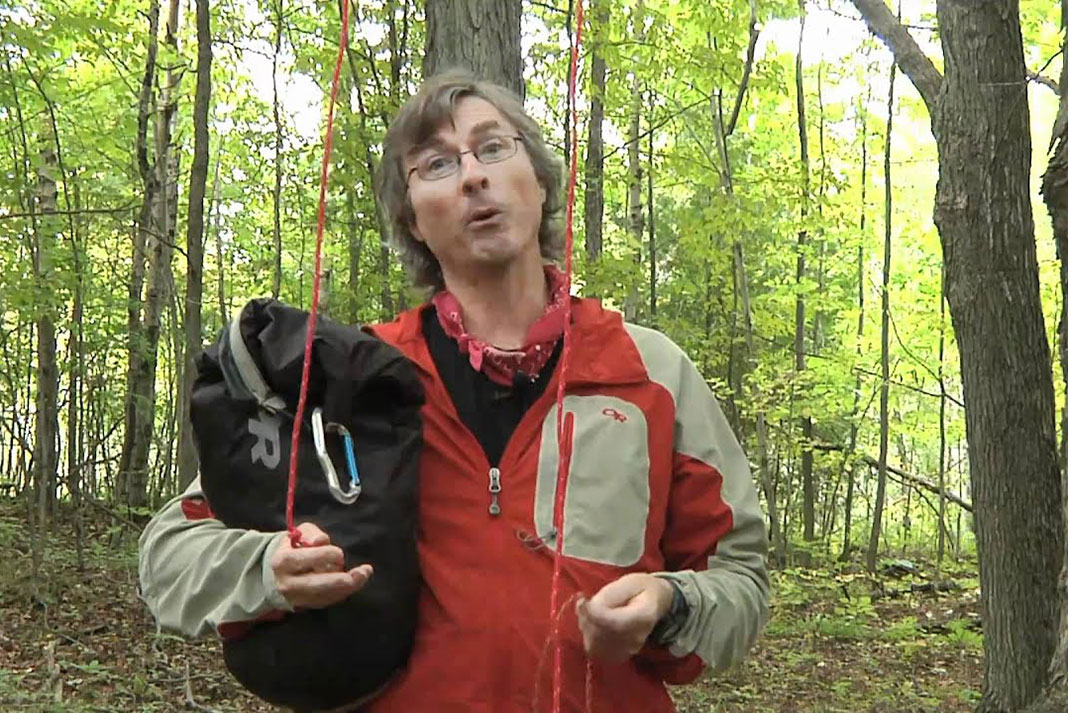
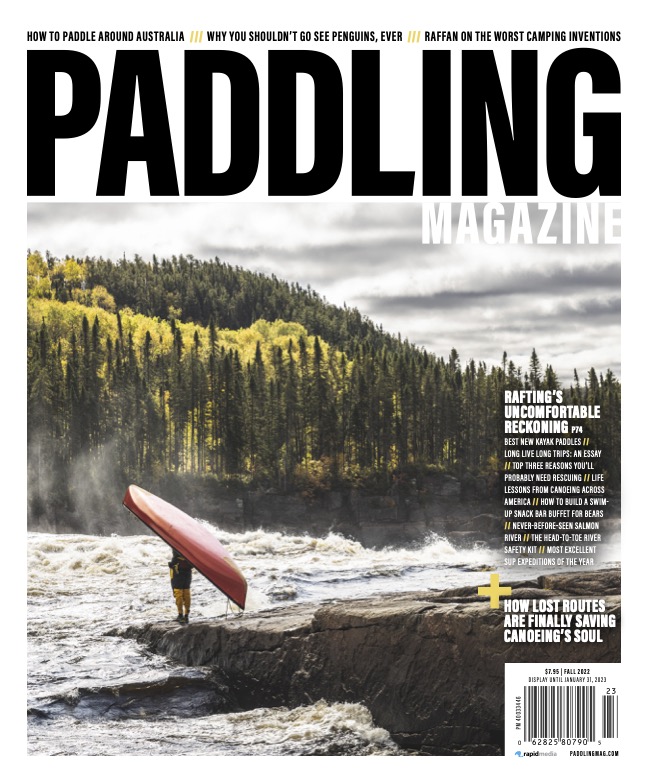 This article was first published in the Fall 2022 issue of Paddling Magazine.
This article was first published in the Fall 2022 issue of Paddling Magazine. 
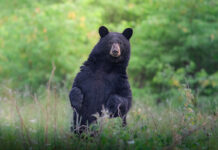


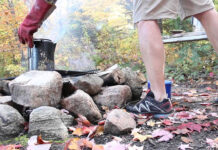

“Now, forget that you’ve just sent your only means of transportation out to sea and sleep soundly.”
Perfect.
Isn’t that method of anchoring called a Siwash anchor or similar?
Or you could, via a game of rock/paper/scissors leave a guard in the overnight canoe?
Bears swim well like most animals. I read a blog post by someone who canoed over night between mainland and a group of islands 2 km away in Lake Huron / Georgian Bay in Ontario. They saw mamma bear with a cub swimming to the same island. During the day there is a heavy boat traffic in the area, so bears swim across over night to graze on blueberries then swim back. Also, in ALgonquin Park, a couple camping on island got killed by a bear that swam across over night. One more argument to not leave food in the canoe, unless zero smell comes from it ,which many times is not the case.
I would NEVER put a food pack in my $4000 Kevlar canoe then anchor it off shore. Remember: if a bear can’t SMELL your food or SEE your food he won’t get your food. If he smells it and finds it, he WILL capsize your canoe to get it. You will then have a delightful mess and possibly a damaged canoe. Bears see very well. If one has learned that food comes in packs and he sees a pack in your off shore canoe, BYE BYE food. He may then take the pack in his mouth and swim it shore or a nearby island. It will be much easier for him if you’ve lined it with waterproof bags so it floats. You will never see it again. Frankly, I’m tired of hearing these make-shift, supposedly brilliant ways of deterring bears. I’ve canoed and camped all over Canada and Alaska for more than 60 years. I’ve had close encounters with scores of black bears, grizzlies and polar bears (once, during a four day “stay” (bad weather) on Hudson Bay, we counted 13 polar bears walking by our camp. In all my years of camping and canoeing I have never had a bear or any other animal get into my food. NEVER! Most people think that bears are stupid so they continue to try simplistic methods that don’t work. Truth is, unless you do something terribly dumb—like leave fish guts in camp, toss uneaten food in the woods near your camp or down the “throne”, etc., you probably won’t have trouble with bears. The exceptions are popular campsites in the Boundary Waters or Quetico, where people are careless with their food, and bears make daily rounds. Even in these places, you will probably be safe if you vacuum-seal your meals (to minimize odors) and properly dispose leftover food. I just don’t understand the huge disconnect that people have with the simple fact that black bears climb trees! And they climb very well. In fact, in Great Smoky Mountain Natl. Park, the black bears overwinter in nests they build in trees! If you’ve spent much time in the woods, you’ve probably observed female bears sending their cubs up trees when danger threatens. Indeed, a favorite technique used by fat momma sows (who have difficulty climbing) is to simply send the kids (cubs) up the tree that contains the hanging food pack. In the western U.S., park managers call these hanging packs “bear pinatas”. Really! You’ll find a dissertation on bears/food/safety in my flagship book, CANOEING WILD RIVERS, 5th Edition. Cliff Jacobson